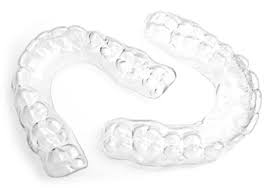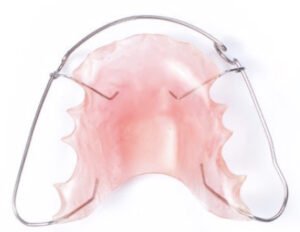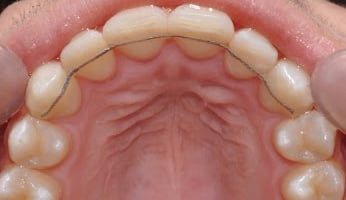Types of retainer
A retainer is a custom made appliance that hold your teeth in position. After braces, teeth have a tendency to move back to their original position. Infact, the reality is our teeth constantly move, even you have never had braces before. But after orthodontic treatment, any minor tooth movement will be obvious and visible. So it is crucial to maintain them in perfect alignment especially in the first few months after braces.
In the past, dentists need to take a mould of your teeth to make retainers. Nowadays, our dentists utilize digital technology to capture teeth using intraoral scanning, producing more accurate result, better fitting, and more comfortable for patients. A soft copy of the scan is kept in storage and retrievable in future in case we need it.
What are the options
There are a few types of retainer, each with their pros and cons. Our dentist will recommend the best option for you based on the clinical condition. Nevertheless, you can voice out your preference as you will be using it for many years. So it is important that you feel comfortable with them and wear as instructed.it

Clear plastic retainer
This type of removable plastic retainer made from thermoplastic or vacuum formed is the most popular one among patient. A thin clear plastic sheet usually range from 0.8 to 1.0mm is heated and molded to your teeth duplicate in stone cast. It is very comfortable and almost invisible. Thus, patient are more likely to wear it during the day, especially in the first 6 months when full time wear is necessary. The plastic sheets have a few popular brands with a variation of thickness and material, namely Essix, Vivera and Duran.
Advantages
-comfortable and almost invisible
-easy and fast to fabricate
-less bulky and less impact to speech
Disadvantages
-the plastic can crack especially if you are not careful with removal
-it can be easily misplaced (usually when dining outside)
-it can be perforated if you grind your teeth at night.

Hawley Retainer
Hawley retainer is made of clear or colorful acrylic plate and some wires. The acrylic plate will fit to your palate and behind the lower teeth like a denture.
Advantages
-durable, can be repaired even if broken
-can be adjusted by dentist if your teeth alignment is slightly off
-upper and lower teeth touch naturally when you bite
Disadvantages
-affect speech
-more noticeable
-more costly and take longer to fabricate

Permanent retainer
Permanent retainer is usually made of a solid or braided wire cemented to the back of your teeth. Thus, it is also known as fixed or bonded retainer. It is not removable so it might be suitable for those cases where the teeth are more likely to relapse or the patient might not comply to wear a removable retainer. It can last for many years and your dentist will decide when to remove them, usually when there is a problem (Eg. detached or causing gum irritation). Clear plastic retainer can be used on top of fixed retainer too, if necessary.
Advantages
-completely invisible
-not likely to affect speech
-no compliance issue to wear
Disadvantages
-hard to clean, especially flossing
-if detached at 1 tooth, usually unnoticeable until the tooth rotated (too late)
-the wire might irritate the tongue
When to remove ?
Although it is called a permanent retainer, they usually do not last a lifetime. Our dentist might suggest removal of permanent retainer if we think removable retainer will do the needful after many years.
-partially detached or broken
-poor oral hygiene or tartar buildup
-gum inflammation or recession
In some cases, moving to removable retainer such as clear plastic retainer for night time wear only might be a good option. For example in late twenties when the jaws have stopped growing and teeth position are relatively more stable by then.
Bottomline
Avoiding relapse is one of the greatest challenge in orthodontics. Regular follow-up is very important to make sure your appliance is working in the way they should be. Patient must realize that it is their responsibility to follow the retention protocol and attend these maintenance visits to ensure long last optimum result.
